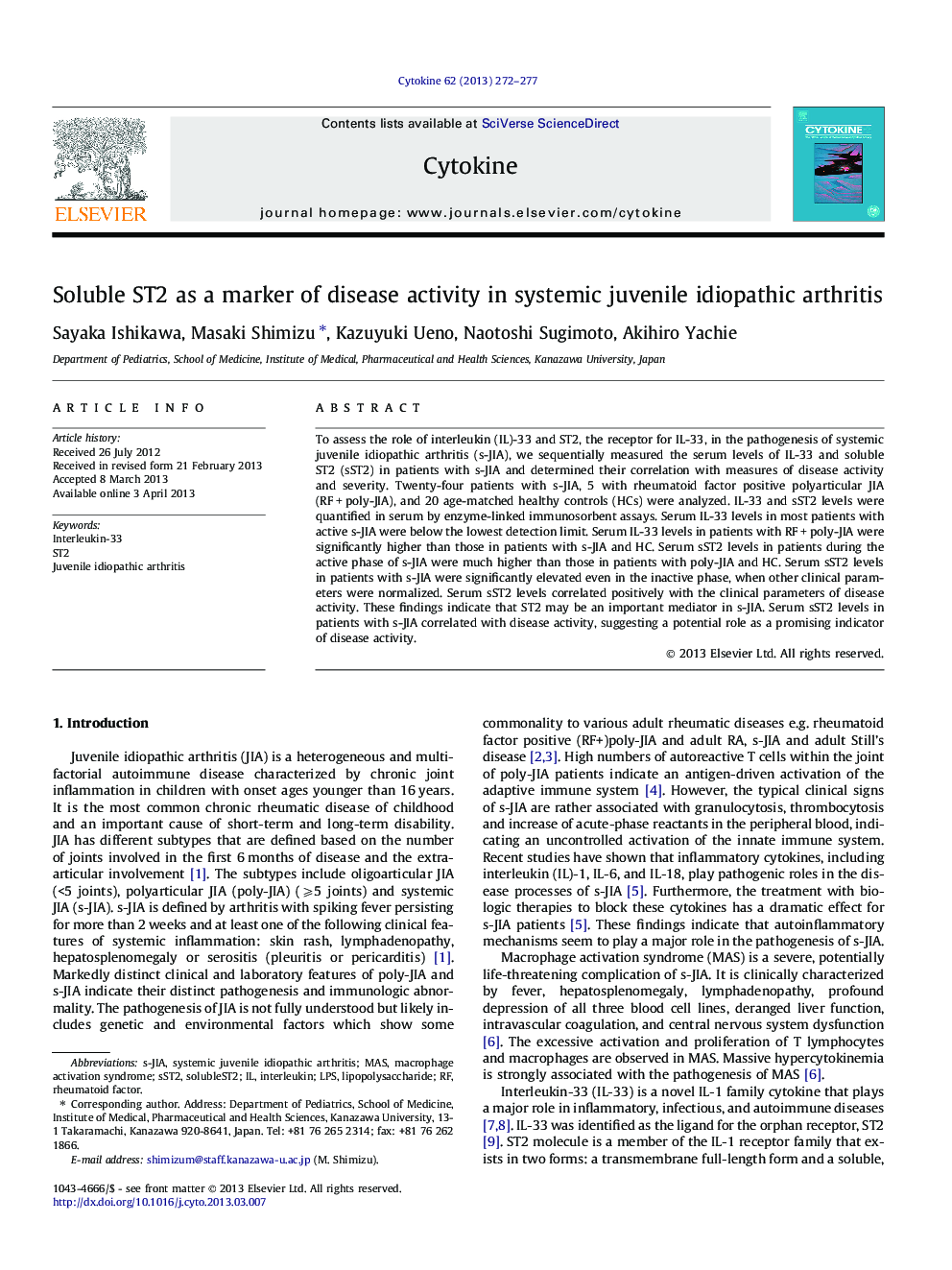| Article ID | Journal | Published Year | Pages | File Type |
|---|---|---|---|---|
| 5897372 | Cytokine | 2013 | 6 Pages |
â¢Serum IL-33 levels in most patients with s-JIA were below the detection limit.â¢Serum sST2 levels in patients with s-JIA correlated with disease activity.â¢Serum sST2 level is a promising indicator of disease activity of s-JIA.
To assess the role of interleukin (IL)-33 and ST2, the receptor for IL-33, in the pathogenesis of systemic juvenile idiopathic arthritis (s-JIA), we sequentially measured the serum levels of IL-33 and soluble ST2 (sST2) in patients with s-JIA and determined their correlation with measures of disease activity and severity. Twenty-four patients with s-JIA, 5 with rheumatoid factor positive polyarticular JIA (RFÂ +Â poly-JIA), and 20 age-matched healthy controls (HCs) were analyzed. IL-33 and sST2 levels were quantified in serum by enzyme-linked immunosorbent assays. Serum IL-33 levels in most patients with active s-JIA were below the lowest detection limit. Serum IL-33 levels in patients with RFÂ +Â poly-JIA were significantly higher than those in patients with s-JIA and HC. Serum sST2 levels in patients during the active phase of s-JIA were much higher than those in patients with poly-JIA and HC. Serum sST2 levels in patients with s-JIA were significantly elevated even in the inactive phase, when other clinical parameters were normalized. Serum sST2 levels correlated positively with the clinical parameters of disease activity. These findings indicate that ST2 may be an important mediator in s-JIA. Serum sST2 levels in patients with s-JIA correlated with disease activity, suggesting a potential role as a promising indicator of disease activity.
